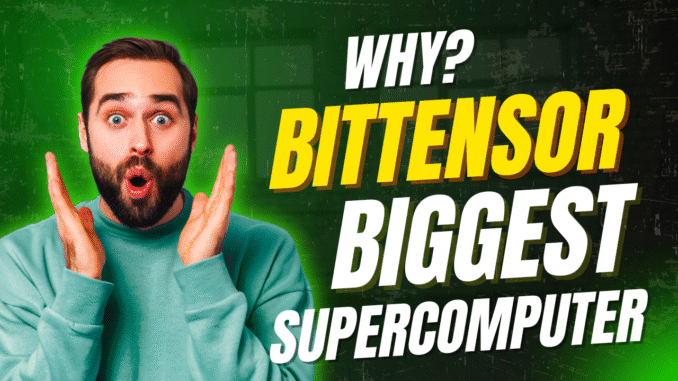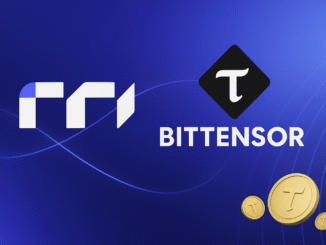
Imagine a supercomputer not locked inside a fortified government facility or a hyperscale data center, but one that spans the globe—powered by millions of everyday GPUs in homes, studios, offices, and cloud racks. A machine not owned by any corporation or state, but grown organically through incentives and open participation.
That’s the trajectory Bittensor is on. To become a global, self-sustaining intelligence network that expands every time a new participant plugs in.
Let’s explore how.
From Bitcoin’s Footprint to a Global Intelligence Layer
To understand the scale Bittensor is aiming for, think back to Bitcoin. By 2013, Bitcoin miners collectively formed the most powerful computational network on Earth, outpacing the top 500 supercomputers combined. A decentralized machine, assembled from garages, warehouses, and farms around the world.
Bittensor follows the same pattern, but points that power toward useful work.
Created by the OpenTensor Foundation, Bittensor is an open, permissionless network where miners contribute models, compute, or data to specialized “subnets”—startup-like projects that handle things like weather prediction, biological simulations, trading signals, content processing, or digital companions. In return, they earn $TAO based on the value they produce.
Unlike centralized supercomputers that rely on billion-dollar budgets, Bittensor grows from the bottom up. Anyone can join. No gatekeepers, no procurement cycles, and no dependence on a single building full of hardware.
This distributed structure is what gives Bittensor a realistic chance to eclipse traditional giants over time.
How a Decentralized Network Becomes a Supercomputer
Bittensor uses the innovative Yuma Consensus to reward quality contributions instead of raw computational size. Subnets act as semi-independent clusters that specialize in solving different categories of problems.
And the progress is already visible.
- Subnet 18 (Zeus) has beaten the ECMWF’s $300M IFS HRES model in key weather metrics—something no decentralized network had achieved before.
- Subnet 4 (Targon) powers apps like Dippy, one of the most-used companion apps in its category, proving that subnet output is being consumed in the real world.
- Some subnets, like IOTA (SN9), require miners to collaborate closely for better performance, creating an emergent “distributed training cluster” effect.
Community members have started referring to Bittensor as “the people’s supercomputer,” where a million modest GPUs outperform a few elite clusters by sheer diversity and scale.
Even scientific researchers are taking note, using subnets to analyze massive datasets in fields like genomics, chemical modeling, and climate studies—tasks traditionally limited to national labs.
Compared to centralized moonshots like Google’s quantum experiments (which showed 13,000× speedups over Frontier in specific physics simulations), Bittensor offers something different: accessibility. No special hardware, no billion-dollar capex. Just contribute to the network and earn.
Why Bittensor Could Become the Largest “Supercomputer” Ever Built
In the AI race, compute decides the winners. But traditional compute is constrained by political boundaries, capital costs, supply chains, and physical infrastructure.
Bittensor sidesteps all of that.
Its strength comes from coordination, not concentration. The more people who join, the stronger the network becomes—just like the early internet. If this trajectory continues, Bittensor could surpass even the largest supercomputers not by brute force, but by becoming an open, global fabric for intelligence itself.
A supercomputer built by everyone, for everyone.
If Bitcoin proved decentralized networks can outcompete centralized systems in computational scale, Bittensor may prove the same for intelligent systems—turning the world’s collective GPUs into the most powerful and versatile neural engine ever assembled.




Be the first to comment